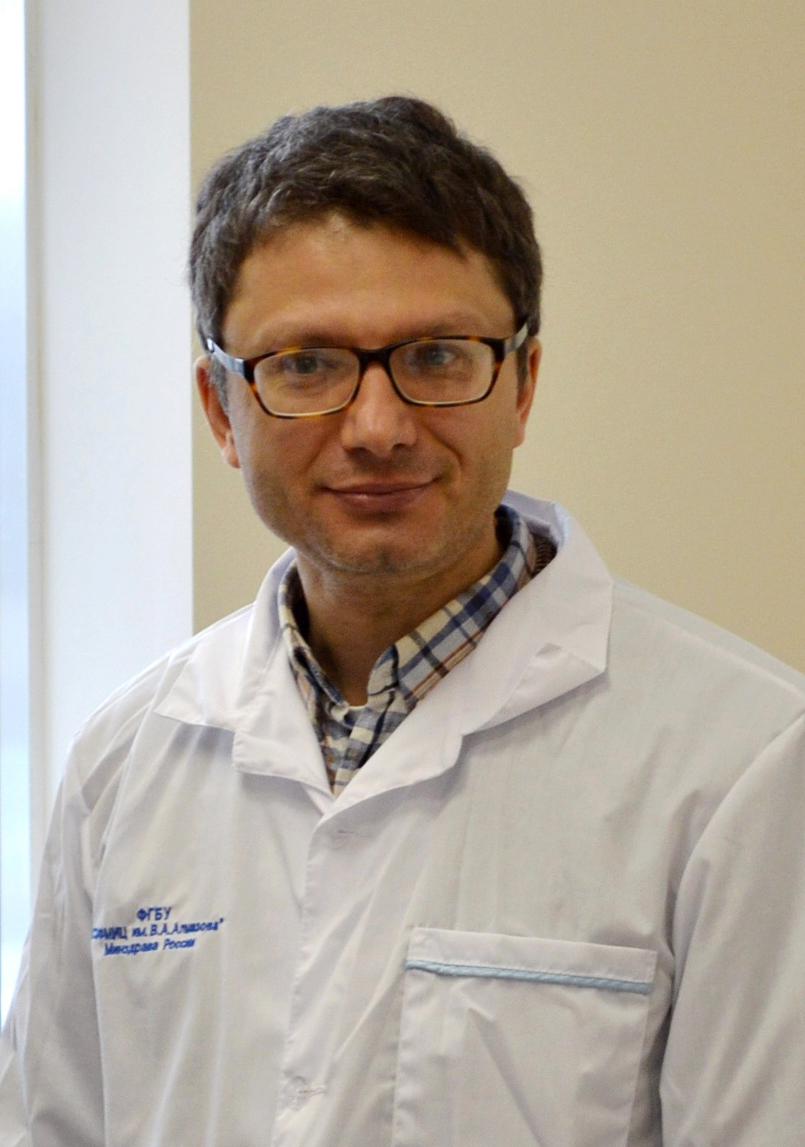Experimental Pathology Group
 Sergey Zhuravsky, MD, DSc
Sergey Zhuravsky, MD, DScHead of Research Group
The Experimental Pathology Group was established in November 2013. It carries out scientific work in collaboration with other laboratories of the Institute of Experimental Medicine.
Research areas:
- Developing the experimental models of diseases appropriate for translational medicine tasks
- Morphological screening of acute and chronic toxicity of inorganic and organic materials, proposed as matrices for dispersed drug delivery systems
- Developing the methods for monitoring and visualizing permeability, biodistribution in target organs and bioelimination of exogenous dispersed particles of nano and submicron sizes proposed as a means of drug delivery
- Morphological analysis of the biodistribution of nanoparticles based on the natural polymer – chitosan
Major achievements:
- Currently, the studies are underway to assess the effect of various nanoscale carriers on the histological picture of internal organs (liver, spleen, lungs, kidney, brain). It was found that a single intravenous infusion of silicon and silica nanoparticles leads to the formation of foreign-body granulomas in the organs of the reticuloendothelial system. Morphometric analysis showed that the total area of granulomas did not decrease from 5 to 60 days after the infusion of nanoparticles. These findings suggest that inorganic nanoscale carriers do not have an optimal biodegradation profile to be used as drug carriers. At present, a pathomorphological study is planned to assess the chronic toxicity of organically modified silica nanoparticles.
- Drafted the concept of targeted delivery taking into account the phenomenon of nonspecifically elevated cyto-availability.
- Identified the property of the natural biopolymer, chitosan, structurally organized as dispersed particles of nano- and submicron sizes to penetrate the hematolabyrinth barrier by non-specific mechanisms.
Prospects for 2017–2018
- Adopting the method of immunohistochemical analysis of histological material
- Participation in preclinical studies of new pharmaceutical ingredients and medical devices
- Validating and developing the technology of targeted drug delivery to the lymphoid tissues of organs in contact with the external environment
- Searching for methods of artificial structural modification of the vestibular receptor site
Scientific partners:
- Laboratories of Pathology, Hearing and Speech, Research Centre of Pavlov First St. Petersburg State Medical University
- Laboratory of Natural Polymers, Institute of Macromolecular Compounds, Russian Academy of Sciences
- Department of Micro- and Nanoelectronics, LETI Electrotechnical University
- Laboratory of evolution of sense organs, Sechenov Institute of Evolutionary Physiology and Biochemistry
Mast cell accumulation precedes tissue fibrosis induced by intravenously administered amorphous silica nanoparticles / S. Zhuravskii, G. Yukina, O. Kulikova [et al.] // Toxicol. Mech. Methods. – 2016.– Vol. 26. – № 4. – Р.260-269.
In vivo toxicity of intravenously administered silica and silicon nanoparticles / S. Ivanov, S. Zhuravsky, G. Yukina [et al.] // Materials. – 2012. – V. 5. – № 10. – P. 1873–1889 (IF JCR 2011 = 1.661).
